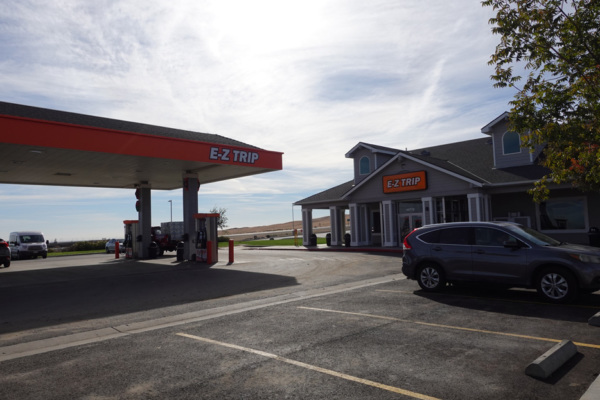Pavement is a significant expense, and there are a lot of factors operators need to consider when determining which products to use.
“If you’re doing a new location, it starts with grading and drainage. If you can’t control run off, you’ll have big expenses later,” said Don Quinn, an industry veteran and former president of Sapp Bros.
Soil type is also important, and Quinn recommends operators work with a civil engineer to determine the soil’s characteristics and ideal solutions. “Some soils are difficult to compact and need a geotextile fabric. Some are very expansive. If they get wet, they expand and that can crack the pavement,” he said, adding that engineers can help determine the best base and subgrade materials. “This is where the expertise of the engineer will pay dividends.”
There are also different mix designs. “An asphalt base mix might have bigger rock and the top layer might have smaller stones. The same goes for concrete,” Quinn said.
To help cut down on transportation expenses, it is helpful for operators to know what is available in the area. “That way you aren’t bringing product in from 200 miles away,” Quinn said.
Once the civil engineer writes the specification, operators can take the information to multiple contractors to get bids. “I know that I am going to get an apples-to-apples comparison,” Quinn said.
Concrete vs. Asphalt
As the price of crude goes up, the cost differential between concrete and asphalt gets narrower.
“Concrete seems to hold up better if it is a good mix,” Quinn said, adding that there are several different ways to hold slabs together.
Once again, Quinn recommends engaging a civil engineer to determine the best method for the location. “It is expensive enough to do it once. You don’t want to have to do it twice,” he said.
Ongoing Maintenance
When it comes to maintenance, operators want to make sure they’re keeping pavement sealed and address cracked or broken spots. However, Quinn said it is important for operators to get to the bottom of why issues are occurring. “If you are doing maintenance, ask yourself, ‘Why am I fixing this?’ There is a reason it failed,” he said.
Subscribe to Updates
NATSO provides a breadth of information created to strengthen travel plazas’ ability to meet the needs of the travelling public in an age of disruption. This includes knowledge filled blog posts, articles and publications. If you would like to receive a digest of blog post and articles directly in your inbox, please provide your name, email and the frequency of the updates you want to receive the email digest.
